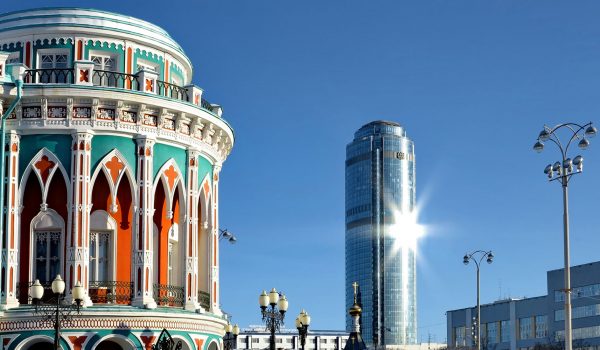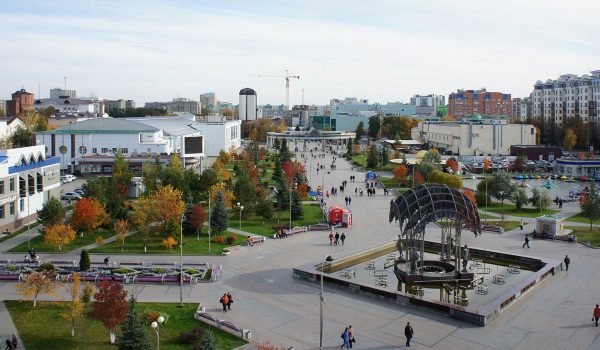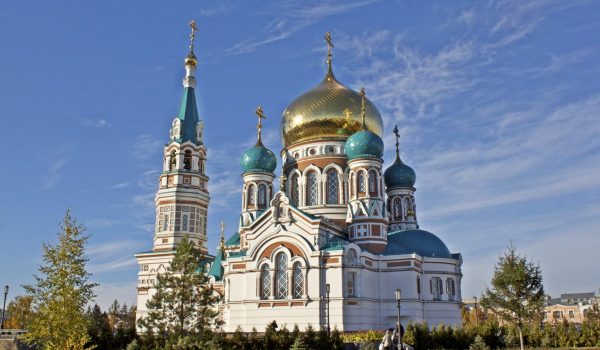Perm owes its existence to V.N.Tatishchev (1686-1750). He was a well-known figure of his time, a comrade-in-arms of Peter the Great. Tatishchev was an outstanding mining engineer, a historian and a geographer. It was he who planned and supervised the construction of the Yegoshikhinsky Cooper Works and founded a factory settlement near the small river Yegoshikha (or: Yagoshikha), a tributary of the Kama in 1723.
This marked the beginning of the city’s existence. The new town was named “Perm” (the word comes from the Finno-Ugric “para ma”, i.e. “the faraway land”) and became the principal town of the province in compliance with Catherine II’s decree of 20 November 1780.
Because of its favourable location near the intersection of major rivers, Perm developed during the 19th century into a transportation hub for such essential goods as salt, metal ore, and the products of metal factories spread throughout the western Ural Mountains. In 1846, regular steamboat service was established on the Kama. Motovilikha Cannon Factory started production in the city in 1863 and later became one of the largest metal industry enterprises of the Urals. In 1863, Perm was included in the major Siberian Highway, and the year 1878 saw the construction of the first part of the Urals Railroad, from Perm to Yekaterinburg, completed.
In the 19th century the city became the major cultural centre of the Urals. In 1870 Opera Theatre was opened in Perm, though the first musical production was shown in the city back in 1806. By the early 20th century there were more than 20 vocational educational institutions in the city and the year 1916 saw the establishment of the Perm University, the first in the Urals.
At the same time, Perm was remote enough to serve as one of the Russian Empire’s many places of exile. The famous state reformer Count Mikhail Speransky, who appears in Tolstoy’s novel War and Peace, fell into temporary disfavor under Alexander I and was exiled here in 1812-14. Two decades later, the writer and political thinker Alexander Herzen spent part of his long exile in Perm (1835). And there were other prominent exiles during the latter part of the century. During the Stalinist era, the Perm region gained the sad distinction as a major point in the Gulag Empire. It 1923 Perm became part of the Urals Region, the center of which was Yekaterinburg.
Between 1940 and 1957 the town was temporarily renamed Molotov, after Vyacheslav Molotov, a foreign minister under the reign of Stalin. During World War II many large-scale industrial enterprises were evacuated to Perm from the European part of the USSR.
Boris Pasternak wrote Dr Zhivago whilst living in Perm, which he renamed as Yuryatin, and part of the novel is set here. Many other notable writers, scientists and artists are associated with Perm. The author of fairy tales P.P. Bazhov was a graduate of the Perm Ecclesiastical Seminary. The writer D.N. Mamin-Sibiryak and the inventor of radio A.S. Popov also studied there. Sergei Diaghilev, ballet and opera impresario and founder of the Ballets Russes, was a graduate of the Perm Classical School.
Esssentially a modern, industrial city, Perm does boast a number of cultural attractions. Lying at the base of the Ural Mountains, with the Karma River flowing to its north, the area is becoming a popular hiking, skiing and rafting destination.
Additional Sightseeing
Located 125km east of Perm at Kuchino, near Chusovoy, Perm-36 was a forced labour camp for four decades, where dissident artists, scientists and intellectuals existed in grueling conditions, working at demeaning and repetitive assembly tasks. The Memorial Complex of Political Repressions, as it has been renamed, is an isolated site which would best be reached – and understood – with the help of a local guide.




